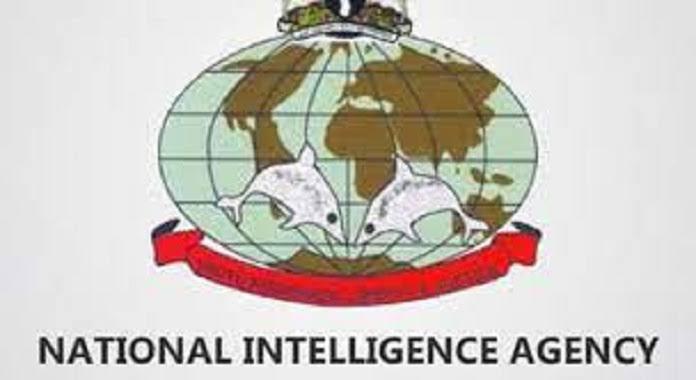The National Intelligence Agency (NIA) is one of Nigeria’s most discreet and strategically vital security organizations. As the country’s primary foreign intelligence arm, the NIA plays a significant role in gathering intelligence outside Nigeria, managing national interests abroad, and countering international threats.
Although the NIA operates covertly, it maintains a structured hierarchy similar to other paramilitary or intelligence services. This blog post will explore the official ranks, hierarchy, and symbols associated with the Nigerian National Intelligence Agency.
About the National Intelligence Agency (NIA)
Established in 1986, the NIA emerged from the restructuring of the National Security Organization (NSO) under the Decree No. 19, which divided the NSO into three agencies:
-
State Security Service (SSS or DSS) – domestic intelligence
-
Defence Intelligence Agency (DIA) – military intelligence
-
National Intelligence Agency (NIA) – foreign intelligence
The NIA's duties are comparable to those of the CIA (U.S.), MI6 (UK), or Mossad (Israel)—handling foreign intelligence collection, espionage, covert diplomatic efforts, and intelligence analysis for national security decisions.
NIA Rank Structure
While the NIA does not publicly display its full rank structure due to operational secrecy, intelligence sources and comparative security models suggest a confidential but formal ranking system, categorized into directorates, senior officers, field officers, and operatives.
1. Director-Level Ranks (Top Command)
These are political and administrative heads of the agency, responsible for national and international operations.
2. Senior Officer Ranks
These officers hold command over various units or zones, both domestically and internationally.
3. Intelligence Field Officers
These personnel conduct intelligence collection, surveillance, and covert operations.
4. Non-Officer Cadre / Support Staff
These include administrative staff, logistics experts, drivers, and communication analysts, who play critical support roles.
Symbols and Insignia
The NIA does not display conventional military-style insignia due to the nature of its covert operations. However, personnel often have coded identification embedded in their ID tags, encrypted communications, and surveillance badges. Uniforms are not standard, as officers operate in civilian attire or diplomatic wear.
However, internal ranks may use:
-
Shoulder epaulettes (within training academies)
-
Color codes and pin badges (to signify clearance level or operational group)
-
Seals and emblems (used only on official documents)
The NIA Seal features a shield with an eagle, globe, and olive branches, symbolizing global protection and strategic peace.
Recruitment and Training
Joining the NIA is a highly classified and rigorous process, typically involving:
-
Invitation through government recruitment or defense intelligence channels
-
Academic qualifications (usually minimum of Bachelor’s degree)
-
Background vetting, including psychological and security screening
-
Secretive training at the NIA Academy on espionage, foreign languages, geopolitics, surveillance, cyber intelligence, and national defense
Responsibilities of NIA by Rank
Director General & Deputies
-
Coordinate international espionage operations
-
Advise the President and National Security Council
-
Formulate foreign intelligence policy
Directors & Senior Officers
-
Analyze international threats (terrorism, drugs, foreign plots)
-
Manage foreign stations and embassies
-
Work with allied foreign intelligence agencies
Field Officers
-
Gather information abroad
-
Monitor foreign diplomats and events
-
Infiltrate terrorist networks or smuggling rings
Estimated Salary Structure
Because of the NIA's classified nature, no public salary scale exists. However, based on comparative intelligence services, here's a projected estimate:
Note: This is speculative based on civil service parity and security allowances.
Frequently Asked Questions (FAQ)
Q1: What is the role of the NIA in Nigeria?
A: The NIA handles foreign intelligence gathering, international espionage, and external national security threats.
Q2: Is the NIA similar to the DSS?
A: No. The NIA focuses on foreign intelligence, while the DSS handles domestic security.
Q3: Can civilians apply to the NIA?
A: Recruitment is not open to the public. Candidates are discreetly selected based on referrals, national needs, or civil service redeployments.
Q4: Does the NIA wear uniforms?
A: No. NIA officers operate undercover and in civilian attire, although they may wear official dress at events or training.
Q5: How can I work with the NIA?
A: Work with the NIA usually comes via recruitment through federal intelligence programs, military redeployment, or elite civil service training.
Q6: Is the NIA accountable to any institution?
A: Yes. The NIA reports directly to the President of Nigeria and works in coordination with the National Security Adviser and relevant defense bodies.
Conclusion
The National Intelligence Agency (NIA) of Nigeria is a crucial pillar in the nation’s security framework, operating behind the scenes to protect Nigeria’s interests abroad. While many aspects of its rank structure and operations remain classified, its hierarchical discipline ensures effective intelligence gathering and strategic foreign surveillance.
Understanding the unofficial rank hierarchy of the NIA helps appreciate the complexity and dedication involved in securing Nigeria’s place in global geopolitics.












